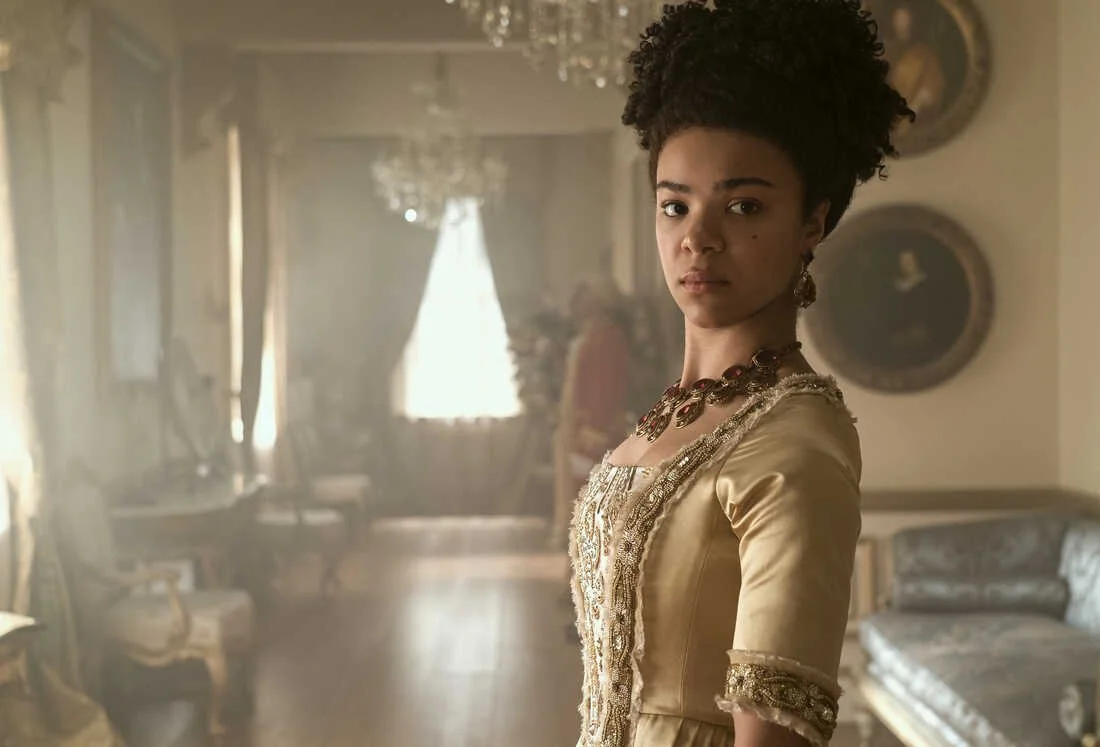Bridgerton's Queen Charlotte And Her Black Hair Experience
When Netflix’s Queen Charlotte hit the airwaves, it captivated audiences with its compelling portrayal of the life and reign of Queen Charlotte, the wife of King George III. Beyond the insightful storyline and impeccably breathtaking costumes, we cannot ignore the stunning array of hairstyles, especially those donned by the character Charlotte. From towering wigs to intricate braids, the looks were big, bold, and unapologetically black. The hairstyles reflected both the fashion trends and social norms of the 18th century.
In the 18th Century, powdered wigs were not only a fashion statement but also a symbol of status and wealth among the upper class. As a member of the Royal Family, Queen Charlotte donned elaborate, voluminous wigs adorned with feathers, ribbons, and miniature elements. The wigs were often sprinkled with signature elements of the black woman hair experience including braids and twists. The powder in the wigs was achieved by dusting the hair with a white or grey powder made from starch or flour. Many of Queen Charlotte’s wigs were colored and often matched the outfits, acting as another layer of grandeur associated with the royal court during that era. Apart from the powdered wigs, Queen Charlotte’s hair was occasionally styled in an afro: a style characterized by natural, voluminous, and tightly curled or coiled hair that forms a rounded or halo-like shape around the head and prominently, effortlessly donned by black women.
The afro grew increasingly popular during the civil rights movements in the 1960s and 70s. It became a symbol of black power, pride, self-acceptance, and cultural identity. The afro is achieved by allowing the hair’s natural texture to grow freely without the nuance of added chemicals and straightening techniques.
Queen Charlotte: A Bridgerton Story. India Amarteifio as Young Queen Charlotte in episode 102 of Queen Charlotte: A Bridgerton Story. Cr. Liam Daniel/Netflix © 2023
Similarly, Queen Charlotte’s storyline sees the character take great strides on her journey of self and cultural identity. Black audiences can appreciate the nod to authenticity both through this hairstyle and moments that depict the honest portrayal of the black hair experience. For example, we see Queen Charlotte’s hair tied up, a necessity for protecting a Black woman’s crown. This detail is generally overlooked when Black actresses are depicted in scenes that involve night-time or ‘just waking up’ moments on television.
As the series progresses and Queen Charlotte’s character evolves, so do her hairstyles. They become more elaborate and utilize a variety of decorative accessories. In many scenes, we see variations of the afro or versions of the hair in its natural state with waves and curls. These natural styles were often embellished with decorative accessories such as jeweled combs, tiaras, and ornate hairpins. These styles, while more modest compared to the grandeur of the powdered wigs, still exemplified elegance and sophistication. They mirrored the evolving fashion trends of the time and embraced natural femininity. The night Queen Charlotte finally consummates her marriage to King George III, she does so in her most natural state. This scene represented the ultimate level of vulnerability, to not only be fully unclothed but to also be seen without makeup and donning her natural hair.
Several times Queen Charlotte favored the classical updo hairstyle. This look gathered the hair at the back or top of the head and secured it in an intricate bun or twist. It allowed a regal view of the neck and shoulders – and impeccable posture. This view showcased the Queen’s poise and refinement reflected in her appearance and through her eventual responses and choices as more of the mystery surrounding King George’s condition is revealed. After the series climax, we see the Queen in what can be viewed as a more relaxed and approachable style, half-up/half-down. This look could represent a departure from the rigid structure and formality of the court, yielding a balance between the pose and the character’s identity within it. At this point, she’d been on a journey and long-desired change in many areas of her life.
Queen Charlotte: A Bridgerton Story. India Amarteifio as Young Queen Charlotte in episode 103 of Queen Charlotte: A Bridgerton Story. Cr. Liam Daniel/Netflix © 2023
From the grandeur of the powdered wigs to the elegance of the updos, to the simplicity and evolving choice of the half-up, half-down styles, each hairstyle was a nod to the character’s development as an individual and within the changing times, among the court. Through these meticulously crafted hairstyles, the series successfully transports viewers to an era filled with glamour, sophistication, and the ever-present desire for self-expression through personal style. Each style/expression of hair was regal in appearance and found a way to be authentic to the black woman's experience of black hair onscreen.
Queen Charlotte’s hairstyles within this series tell a story all its own while simultaneously reflecting the character’s journey and progression. They enhance her visual appeal but also serve as a window into fashion trends, and cultural and societal norms of the 18th century. From the grandeur of the powdered wigs to the elegance of the updos, to the simplicity and evolving choice of the half-up, half-down styles, each hairstyle was a nod to the character’s development as an individual and within the changing times, among the court. Through these meticulously crafted hairstyles, the series successfully transports viewers to an era filled with glamour, sophistication, and the ever-present desire for self-expression through personal style. Each style/expression of hair was regal in appearance and found a way to be authentic to the black woman experience of black hair onscreen.
With the next installment of Bridgerton on its way, fans can expect to dive deeper into the either loved or hated persona, Lady Whistledown’s walk down the aisle, as Colin Bridgerton and Penelope Whistledown’s story is embraced during season three.





